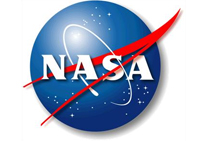Community College Scholars Selected To Design Robotic Rovers
 Eighty students from community colleges in 28 states and Puerto Rico have been selected to travel to a NASA center to develop robotic rovers. The National Community College Aerospace Scholars program encourages students to pursue careers in science, technology, engineering and mathematics (STEM) disciplines.
Eighty students from community colleges in 28 states and Puerto Rico have been selected to travel to a NASA center to develop robotic rovers. The National Community College Aerospace Scholars program encourages students to pursue careers in science, technology, engineering and mathematics (STEM) disciplines.
The students will visit either NASA’s Jet Propulsion Laboratory in Pasadena, Calif., April 27-29 or the Johnson Space Center in Houston May 12-14. Participants were selected based on completion of Web-based assignments during the school year. The students will establish teams and form fictitious companies pursuing Mars exploration. Each team will shape a company infrastructure to develop and design a prototype rover. The on-site experience includes a tour of NASA facilities and briefings from agency scientists, engineers and astronauts.
“This innovative experience allows students to take what they’ve learned in the classroom and apply it to technical questions in the real world, simulating what NASA engineers and scientists do every day,” said Leland Melvin, NASA associate administrator for education. “It will help them develop the skills they need to be the problem solving explorers of tomorrow.”
The program is based on the state of Texas’ Aerospace Scholars, originally created in partnership with NASA and the Lone Star state’s educational community. The programs are designed to encourage community and junior college students to enter careers in science and engineering and ultimately join the nation’s highly technical workforce.
Through this program, NASA continues the agency’s investment in educational programs that attract and retain students in STEM disciplines critical to NASA’s future missions.
For a complete list of the students, their states and the community colleges they represent, visit:
For more information about NASA’s National Community College Aerospace Scholars Program, visit:
http://aerospacescholars.jsc.nasa.gov/
For more information about NASA’s education programs, visit:








